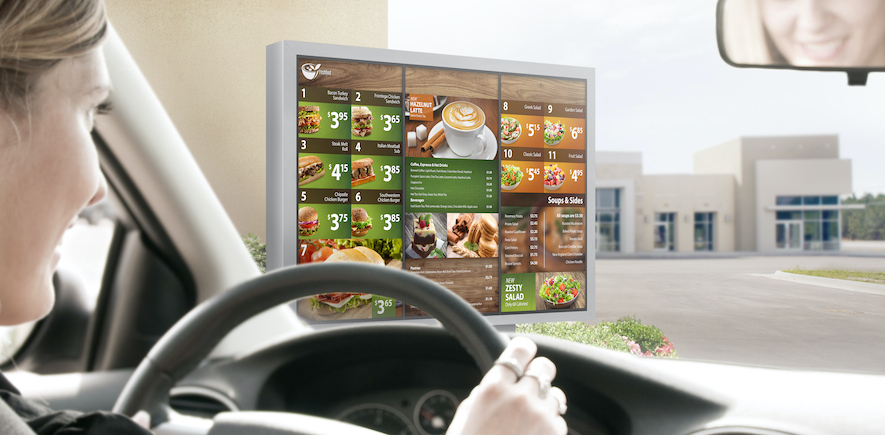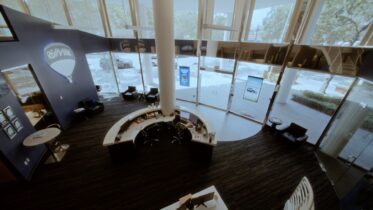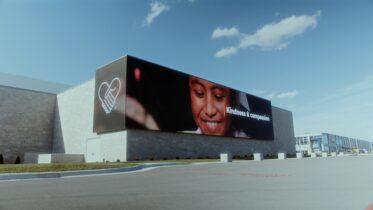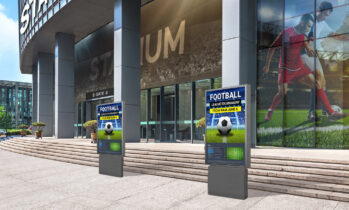While health and safety concerns and local restrictions have prompted many retail operators to expand their businesses to the curbside, the longer-term story behind that shift is as much about convenience.
Retail has been using alternative shopping methods for years, including curbside pickup, lockers and drive-through windows; the pandemic has just accelerated that shift.
Groceries and hardware stores were always likely candidates for curbside operations, but we’re now seeing businesses as diverse as paint shops and pet supplies stores also offering curbside pickup.
The shift is so pervasive that the owner-operators of open-air suburban malls are now helping create the infrastructure to streamline curbside pickup. It’s a different way of delivering business services, and these changes work best when they’re effectively communicated and guided.
Improving shopping experiences
Over the last several months, I’ve seen everything from signs on sticks stuck in traffic cones to chairs with taped-on paper signs directing shoppers to a pickup location. These sorts of hacks deliver the wrong message about the store and the brand.
That’s why retailers of all sizes and sectors are adopting outdoor digital display technology that can not only locate their curbside pickup zones, but also notify customers and guide them through the process.
Depending on how sophisticated the operator’s systems and services are, as well as the scale of the business, digital curbside displays can provide anything from basic location and guidance (“Pick up here!”) to sleek, personalized experiences that drive customer convenience and experience.
Digital transformation solutions for retail
Learn how to unify an omnichannel marketing strategy in this webinar. Download Now
We’re seeing working examples of curbside pickup systems that recognize the driver through apps and sensors, greet them as they pull into the pickup zone and update them on their order status. That can all happen without the shopper needing to check in on an app once they’ve arrived.
Imagine rolling up to a pickup stall and seeing a screen that says, “Hey, Natalie! Welcome back! We’re pulling your order together and should have it out to your car at Stall 4B in three minutes! Just open your tailgate and we’ll load you up.”
Curbside pickup gained popularity in 2020 by keeping staffers and customers socially distanced and safe. But ordering ahead — and not even needing to get out of the car — is also very appealing to people who are on a shopping mission and not just browsing.
Outdoor technology options
Pushing retail technology outside can take a few different forms:
- Fully outdoor displays: Housed in weatherproof, vandal-resistant enclosures, large-format totem displays — single or two-sided — can be networked and steadily updated with real-time customer messaging. Because the displays are in full sun, they have super-bright, daylight-readable screens and are engineered to operate in harsh weather. The biggest technical challenge is a simple one: You just need to power the units.
- Portable, battery-driven displays: The modern version of sidewalk sandwich boards are sometimes called digital A-frames — screens that can be placed outside stores to deliver networked messaging during store hours, then pulled inside overnight. Batteries keep the screens running all day, and remove the tripping hazard presented by power cords.
- In-window displays: Retail operators with large windows that face walkways and parking areas use extra-bright fixed window displays, with the messaging facing outward. This removes the technical hurdle of finding power for fully outdoor units, as well as the operating demand of moving portable displays.
Automating and managing these notification systems can be relatively simple, the wild cards being whether the retailer’s business systems are designed to work with external systems. A digital signage content management system (CMS), paired with devices like proximity sensors, can also help drive these displays.
Dynamic, responsive signage tactics
When I’m talking with retailers and discussing technology options, questions sometimes come up about why digital displays are necessary when shoppers can read printed signs or just use smartphone apps. I tell them this process is new and largely unfamiliar, and benefits from guidance. Using digital technology allows an operator to deliver multiple, personalized messages from the same position, and send messages about the brand and how it looks out for its customers.
Outdoor retail screens — particularly when pickup activity isn’t constant — easily double up as marketing machines, driving awareness and usage of business services, and also generating foot traffic by using their “downtime” for promotional messaging and branding.
The global health crisis has put a lot of pressure on retailers to evolve fast, in some cases speeding up three-year digital transformation plans into three-month plans. Adding a new layer of service and rapidly expanding business operations can seem daunting, so we spend a lot of time talking to customers about their needs and how they want to operate.
Retailers looking to push part of their business to the sidewalk and parking lot should be thinking in terms of their baseline state and their goals. Is this about experience and convenience? Is it about safety? Upselling at the curb? Loyalty?
Changing needs
This trend isn’t going away, we think. Lockdowns and social distancing forced digitally hesitant folks who had never used mobile banking to try depositing checks with their phone. It worked. And now they love it, forcing retail bankers to reexamine how their branches should work going forward.
Being able to pick up routine products without having to leave the car will appeal to many shoppers, across all age brackets and demographics. We’re training and guiding consumers about this new kind of convenience.
Everything about curbside pickup sounds great, but retailers are reasonably wondering: “What’s the return on investment?”
At a base level, doing business beyond the front door allows a retailer to operate even when local restrictions or staffing shortages make it challenging to open the store to foot traffic.
We’re also working with a lot of different retailers to look at things like purchasing behaviors and conversions, to see if the efficiencies and personalization realized through digital technology have tangible impacts. One of the areas that excites me is looking at on-screen messaging, doing A/B testing with displays and messaging to see what resonates with shoppers and using insights to fine-tune the content conversation between retailers and their customers.
Analytics from a variety of audience and shopper measurement technologies can also provide a huge amount of insight on how stores now work. We’ve already seen Walmart announce major changes to how its stores work, recognizing the “get in, get out” mission of most shoppers.
What we’re hearing from retail, broadly, is that a lot of clients want to inform, educate and protect both their customers and their employees. They want to know what they can do to drive things like basket uplift, but they also want to improve shopping experiences and make them more memorable.
It may seem counterintuitive in the height of a health emergency, and in a rough economy, to be looking for change, but retailers know their legacy operations have to adapt. Most of our customers are trying to move faster, and be agile, because they know their customers are demanding it.
Learn more about digital signage applications in retail by watching this free webinar. Then discover how eHopper’s mPOS solution can help you make contactless payment transactions.








